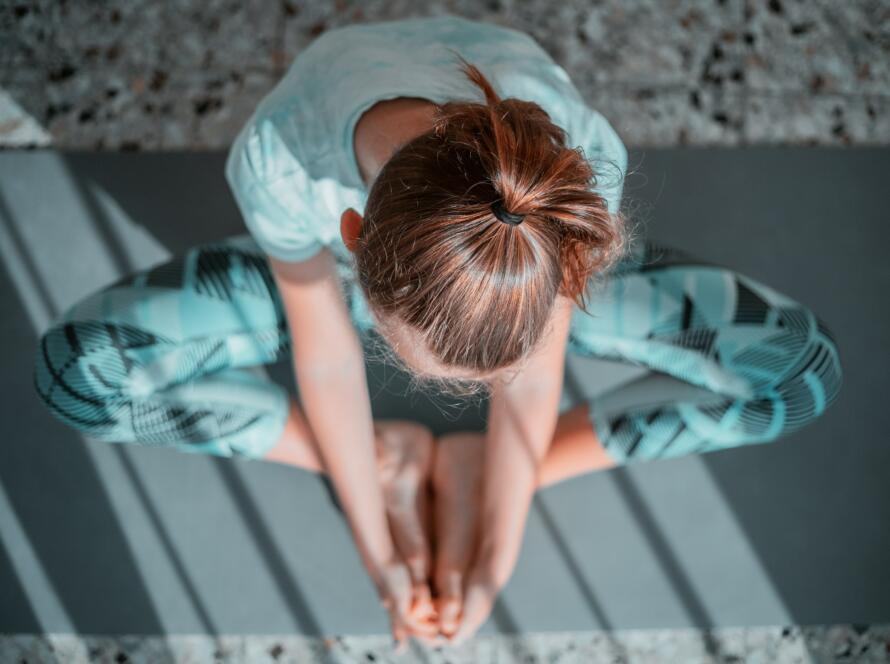Pilates is a wonderful way to increase flexibility and strength while improving posture, balance, mobility and core stability.
Unfortunately, it’s not uncommon for students to develop poor habits that can sabotage their practice before they even realize what’s happening. If you are struggling with your Pilates practice or noticing that you aren’t getting the results you want from class, these five habits could be derailing your progress:
1 – Allowing your stomach to round or “dome” when performing abdominal exercises
A “dome” is when you allow your tummy to protrude during exercises. Thinking of pulling your belly button toward your spine can be a helpful cue to avoid the “dome”. You want to keep your abdominals wide and flat.
The stomach should remain slightly engaged and flat during abdominal exercises. If you start to feel an excessive arch in your lower back when doing core work, it means that you have too much tension in your abdomen. Ease off the exercise and try again.
2 – Forgetting to breathe
It’s important to breathe while completing Pilates exercises, as this helps you to relax and prepare for the next movement. Breathing also allows your body to stay focused and centered on the task at hand, allowing the appropriate muscles to fire.
To keep your breathing steady, say to yourself “inhale” as you take a breath in and “exhale” as you breathe out. This will help provide structure so that when you are moving through the exercise it’s easy for both mind and body to follow suit.
3 – Letting your mind wander
Pilates is a moving meditation. It’s a mindful practice that helps you connect your body and mind, in the moment, for the purpose of improving your physical strength, mobility and balance.
Pilates helps you tune into yourself on an intuitive level. In order to do this, it’s important not only that you show up physically but also mentally.
When we are present and connected while practicing Pilates there is little room left for anything else (ie. other thoughts about the day, what’s for dinner, wondering where your keys are). This allows you to notice what feels good or bad within your body so that you can make informed decisions about how to move forward with the exercise.
4 – Failing to modify exercises
Let’s be honest, we all want to be flexible and strong.
If you are practicing the same exercises over and over again, but feel like you aren’t getting the results you want, it may be time to step back and reassess your approach.
Everybody is different; some people are quite stiff, and some people have less muscle mass than others.
That being said, there may come a time when modifying an exercise will better serve your practice as well as your body goals—and that’s okay! If a particular exercise feels too easy or difficult for you, then it’s important to listen to your body and adjust accordingly by varying the movement or stopping altogether so that you don’t get hurt.
If you are new to Pilates, I encourage you to give yourself enough time to gain muscle strength before progressing to a more challenging exercise. On the flip side, if you have been doing Pilates for a while don’t forget to challenge yourself. It helps to build muscle and strength.
5 – Not allowing your shoulder blades to glide down your back
This one is 3 fold. It helps to improve your posture, engage your shoulder girdle and encourage length through the neck muscles.
We tend to have “bully” muscles throughout our bodies. Bully muscles have a tendency to override smaller muscles during exercises. Our neck muscles are a common “bully”. When we drop our shoulders we are telling our neck muscles to relax and our shoulder girdle and upper back muscles to activate. This is a win-win!
There is nothing worse than finishing a Pilates class with tense neck muscles. If you notice your neck muscles tightening, try this: Allow them to glide down your back like 2 bars of soap. Did your shoulders just drop??… ahhhh! such a nice feeling. You’re welcome 😀
Conclusion
Pilates is a wonderful exercise program that can help you strengthen your core, improve balance and mobility through your joints. However, if you are not careful with your form and don’t pay attention to the details of each exercise, you may be doing harm to your body.
Take time before each exercise to ensure you have proper alignment with your spine, pelvis, chest and shoulders. Actively implementing the points above will help your Pilates practice to improve.
– Christine Kirkland is a Certified Pilates Instructor offering online Pilates classes. She specializes in helping adults to increase their balance, strength, mobility and feel their best every day. Sign up for her newsletter to stay up to date on all things Pilates including fitness tips & free classes by visiting her website here.


